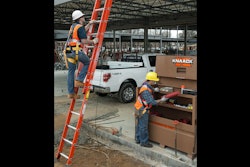More than a year has passed since a technician was killed by a robot at a Michigan factory, and her family wants answers.
Wanda Holbrook, 57, was working as a journeyman maintenance technician at Ventra Ionia LLC, in Ionia, MI. Her job was to maintain the robotic machines at the factory which performed stamping, molding and related services for chrome-plated plastics, bumpers and trailer hitches. Holbrook had worked at the plant for 12 years before he death.
On July 7, 2015, while performing a routine maintenance on a machinery, a robot unexpectedly activated and began loading a part into the unit Holbrook was inspecting, crushing her skull and killing her. Her widower, Bill Holbrook, filed a wrongful death suit this week in Federal Court in a search for answers to what went wrong.
“Wanda was working in either section 140 or 150 within the ‘100’ cell, when a robot from section 130 took Wanda by surprise, entering the section she was working in,” the lawsuit reads. “Upon entering the section, the robot hit and crushed Wanda’s head between a hitch assembly it was attempting to place in the fixture of section 140, and a hitch assembly that was already in the fixture.”
Holbrook was discovered by other employees at the plant when they noticed operations weren’t working properly. She was found unresponsive in section 140 and was pronounced dead at the scene when first responders arrived, the lawsuit states.
The lawsuit names five companies responsible. The three companies that built the robot — Fanuc America, Nachi Robotic Systems and Lincoln Electric — and the two companies responsible for installing and servicing the robot — Flex-N-Gate and Prodomax.
The lawsuit claims the robot never should have entered the section that Holbrook was in. It also shouldn’t have attempted to load a hitch assembly in a fixture that was already loaded with one.
"I want to make sure nothing like this happens to another family. We would feel terrible if we didn't do anything and then another family had to go through something similar to this," Bill Holbrook told the Detroit Free Press. "If it's an accident, it's an accident. If it's preventable, I want it to be prevented."
“A failure of one or more of defendants’ safety systems or devices had taken place, causing Wanda’s death,” the lawsuit reads.
The lawsuit also claims that the “100” cell automation system failed to meet several Occupational Safety and Health Administration (OSHA) and Michigan Occupational Safety and Health Administration (MIOSHA) laws and regulations.
“Moreover, the ‘100’ cell automation system failed to meet numerous American National Standard (ANSI), American Welding Society (AWS) and Robotic Industries Association (RIA) standards relating to robots, robot equipment, welding, electric systems, machinery, risk assessment, as well as other areas to be determined in discovery. All defendants were responsible for these failures,” the lawsuit reads.






















